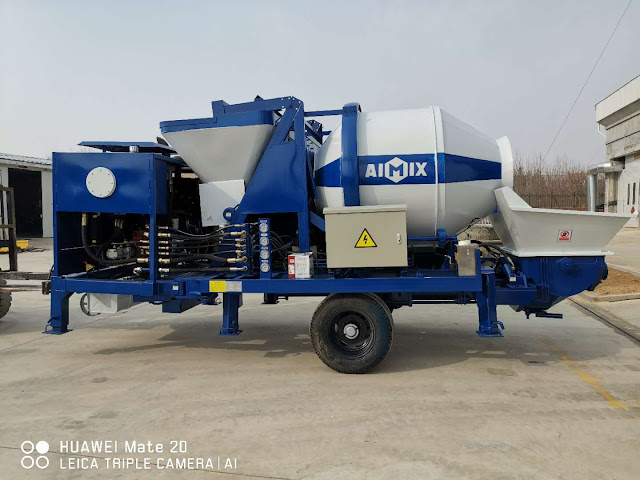Common Wearing Parts of Self-Loading Concrete Mixers
Self-loading concrete mixers are highly efficient and versatile machines, ideal for construction sites that require mobility and productivity. These mixers are designed to load, mix, and transport concrete to various construction sites, making them a must-have for many construction companies. However, like all machines, self-loading concrete mixers require regular maintenance to ensure optimal performance. Understanding the common wearing parts and their maintenance needs is crucial for extending the life of these machines.
Introduction to Self-Loading Concrete Mixers
Self-loading concrete mixers are an essential part of the construction industry, especially in projects that demand mobility and flexibility. These mixers come equipped with a loading bucket, a mixing drum, and a transportation system, allowing them to mix and deliver concrete on-site without the need for additional equipment.
However, with constant use, certain components of the self-loading concrete mixer(mixer autocargable) are prone to wear and tear. Identifying these components and ensuring they are properly maintained can prevent breakdowns and costly repairs, enhancing the longevity of the machine. In this article, we’ll explore the common wearing parts of self-loading concrete mixers and discuss how to maintain them effectively.
Key Wearing Parts of Self-Loading Concrete Mixers
1. Mixing Drum
The mixing drum is one of the most crucial components of a self-loading concrete mixer. This part is responsible for mixing the concrete and ensuring that the final product is consistent and uniform. Over time, the inside of the drum can experience wear due to the friction between the drum and the materials being mixed.
Maintenance Tip: Regular inspection of the drum lining and replacement of any worn-out parts will help maintain the efficiency of the mixing process. The lining of the drum can often be replaced or resurfaced, which can reduce wear and extend the lifespan of the mixer.
2. Auger Blade
The auger blade plays a critical role in loading the materials into the mixing drum. This rotating blade helps lift and feed materials such as sand, cement, and aggregates into the drum for mixing. Due to the constant contact with abrasive materials, the auger blade is prone to wear. The blade’s effectiveness diminishes over time if the wear is not addressed.
Maintenance Tip: Check for any cracks or bends in the auger blade. Regular cleaning and lubrication of the blade are important to ensure smooth operation. If the auger blade shows significant wear, it should be replaced to avoid inefficiencies.
3. Water Pump and Hose
Self-loading concrete mixers(Autohormigonera de Chile) often require water to adjust the consistency of the concrete. The water pump and hoses that supply the mixer are exposed to wear due to the continuous flow of water and the environment in which the machine operates. The hoses can become clogged or damaged, while the pump can lose its efficiency over time.
Maintenance Tip: Regularly inspect the hoses for cracks or blockages. The water pump should be checked for any signs of rust or wear, and it should be cleaned frequently to maintain proper functionality.
4. Transmission and Gearbox
The transmission system and gearbox are responsible for transferring the engine's power to the various parts of the self-loading concrete mixer, including the drum and auger. These components are subjected to constant stress and friction, which can cause wear. If the gearbox or transmission is not properly maintained, it can lead to failure and costly repairs.
Maintenance Tip: Periodically check the fluid levels in the gearbox and transmission system. Look for any unusual noises or signs of overheating. Regular oil changes and lubrication are essential to prevent premature wear.
5. Wheel Assemblies
The wheel assemblies of self-loading concrete mixers, particularly the tires, experience considerable wear due to the constant movement on construction sites. These parts are subjected to rough terrains, which can lead to punctures, tears, and general deterioration of the tires.
Maintenance Tip: Inspect the tires regularly for any visible damage. Ensure that they are properly inflated to the recommended pressure, as under-inflated tires can cause uneven wear. If the tires are worn out, they should be replaced to ensure smooth mobility.
6. Hydraulic System
Self-loading concrete mixers(Autohormigoneras de Perú) rely heavily on their hydraulic system for operating the drum, auger, and other key components. Hydraulic hoses and cylinders can suffer from wear due to continuous use and the high pressure within the system.
Maintenance Tip: Inspect the hydraulic hoses for leaks or cracks. Ensure that the hydraulic fluid is at the proper level and free from contaminants. Regular servicing of the hydraulic system will prevent major breakdowns.
Conclusion
In the construction industry, the self-loading concrete mixer is an indispensable tool for mixing and delivering concrete on-site. Understanding the common wearing parts and performing routine maintenance will not only extend the lifespan of the machine but also ensure that it operates efficiently when needed most.
By regularly checking and replacing worn components such as the mixing drum, auger blade, water pump, gearbox, and hydraulic system, construction companies can avoid unexpected downtime and costly repairs. Keeping your self-loading concrete mixer in top condition ensures consistent performance and enhances productivity on construction sites.




Comments
Post a Comment